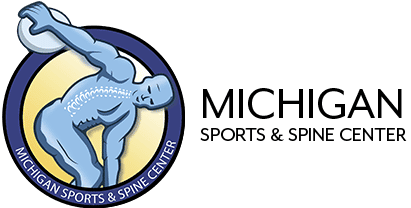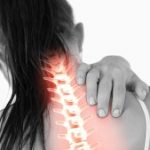Winter Injuries Part II – 4 Most Common Injuries & Treatments
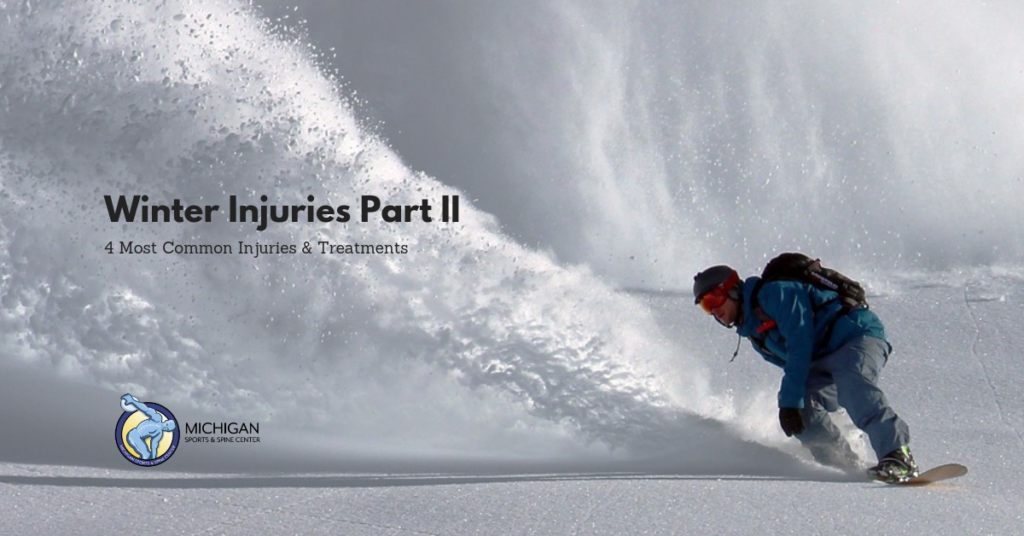
Our first winter injuries blog was about the most winter common winter injuries and the ways to avoid them. In part II, we will address the 4 most common winter injuries and the best ways to treat them.
With winter comes excess stress, strain, and danger. Winter sports typically involve ice and snow and result in collisions and concussions. Winter chores, such as shoveling, can result in lower back strains. Winter driving results in more fender benders causing neck/back/shoulder trauma. Lastly, slips and falls can result in wrist injuries. Our specialized doctors are able to non-surgically treat nearly all winter injuries. Read on as we explain the best treatment plan for each of these common winter injuries.

4 Most Common Winter Injuries
- Concussions – Winter Sports
- Low Back Strain – Shoveling
- Whiplash – Automobile Accidents
- Wrist Injury – Slip & Fall
Concussions – Winter Sports
When participating in winter sports there is an added danger involved with sliding/gliding on ice or snow. These activities result in much higher speeds than running on two feet can produce and sometimes a collision with either an object or another competitor is possible.
When we talked about prevention, we mentioned the importance of wearing all recommended safety equipment, following the stated rules, and understanding your limits. Even if you listen to this advice, sometime and injury can occur.
A concussion is a brain injury that results in a temporary or some instances, lasting disruption of normal brain function. A concussion occurs when the brain is violently rocked back and forth or twisted inside the skull as a result of a blow to the head or body.
Treatment:
- Many people think of a concussion as a sudden, one-time traumatic event, however, a concussion is due to a series of metabolic (biochemical) changes in the brain that are set off by the traumatic event.
- Some people will have obvious symptoms, such as passing out or forgetting what happened prior to the injury. But others will show no signs at all.
- Repeated concussions or a severe concussion may lead to long-lasting problems with movement, learning, or speaking.
- Reports show an increasing number of retired NFL players who have suffered concussions have developed memory or cognitive issues, such as Alzheimer’s, dementia, depression and chronic traumatic encephalopathy (CTE).
- Never return to play or vigorous activity while signs or symptoms of a concussion are present.
- Rest is essential after a concussion because it helps the brain to heal.
- Rest also includes mental activities.
Low Back Strains – Shoveling
Shoveling can often result in a lower back strain for a variety of reasons. First of all, snow can be heavy and the motion of throwing snow with a shovel puts a lot of strain on our core. A weak or unsupported core can cause these muscles to strain or worse case, a disk in the spine to become injured.
When we spoke of prevention we suggested to understand your limits, wear proper clothing, warm-up and stretch before the activity, and use proper throwing motion avoiding lifting with you back while turning. Even if you follow all of this advice an injury still can occur.
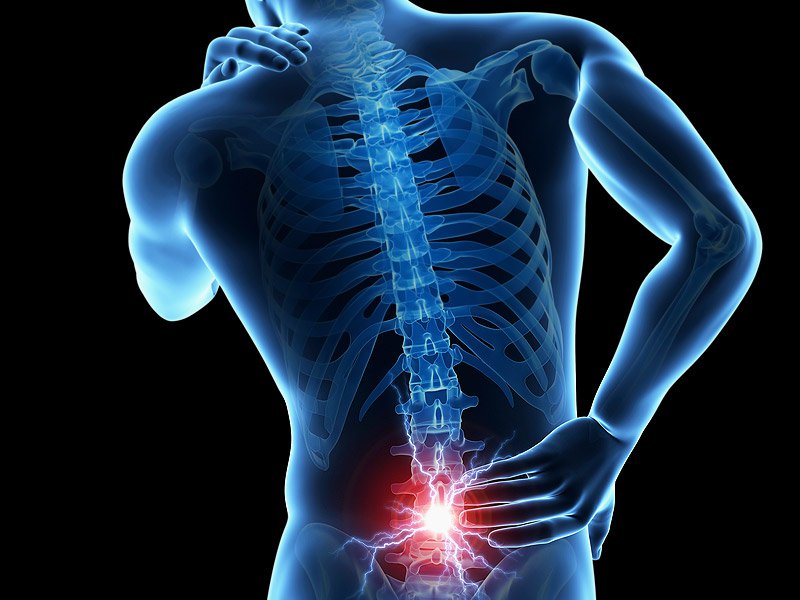
Treatment
Sometimes low back pain gets better on its own; however, if it lasts longer than a week, you should book an appointment with a spine injury specialist.
There are several effective treatment options for low back pain:
Injections:
- Trigger point injections: a procedure used to treat painful areas of the muscle that contain trigger points, or knots of muscle that develop when muscles do not relax, involves the injection of medication directly into the trigger point
- Epidural injections: an injection into the spine, delivering steroids that can provide low back pain relief by reducing inflammation
Manipulations:
- Applying pressure to the bones and the surrounding tissues the treatment reduces pain, commonly decreasing the need for meds.
- Rapidly advances physical therapy.
- Requires very few passive forms of treatment, such as bed rest.
Physical Therapy/Exercise Training:
- The combination of exercise training and physical therapy usually includes stretching, strengthening and low-impact aerobic exercises.
Massage Therapy:
- Improves blood flow and reduces muscle stiffness.
Acupuncture:
- An ancient Chinese medical practice that seeks to ease the pain by balancing the body’s natural energy pathways and releasing serotonin, a ‘feel-good’ chemical that relieves pain and discomfort.
Whiplash – Auto Accident Injury
Driving in winter conditions often results in a lowered degree of control of our vehicles. An increase in low-speed accidents means more fender benders and more head/neck/shoulder injuries often known as whiplash.
Whiplash is a relatively common injury that occurs to a person’s neck following a sudden acceleration-deceleration force that causes unrestrained, rapid forward and backward movement of the head and neck. It is often ignored or mistreated due to lack of understanding of the condition.
Sometimes you won’t even feel the effects of the accident right away, this can be due to an increase in adrenaline caused by the accident. Whether you feel pain right away, or if you’ve noticed a lingering pain, there are treatment options for this injury.
Treatment
In the past, the initial treatment for whiplash was often a soft cervical collar for several weeks. The goal of the collar was to reduce the range of motion of the neck and to prevent any additional injuries. More recent studies have shown that this prolonged immobilization actually slows the healing process. If there is no evidence of abnormal spinal alignment, early range of motion is advised. Patients involved in early range of motion exercises have been shown to have a more reliable and rapid improvement in their symptoms.
As spinal specialists, we can safely asses the degree of damage and recommend a safe physical therapy treatment plan to help the injury fully recover.
Wrist Injury – Slip & Falls
The most common winter injury is caused by the simple slip and fall. Winter conditions can be very difficult to navigate and icy steps, sidewalks, and driveways can cause even the most sure-footed walker to tumble. Elderly people and others with limited mobility are even more susceptible to a slip and fall injury.
If you’ve fallen take a moment to assess your condition. If you’ve hit your head, you may want to seek assistance before trying to stand again. Dizziness from the impact can cause you to fall again. Before you get back onto your feet, check the area around you and understand what made you slip in the first place. Make sure you don’t repeat the same motion.
If you’ve hurt either your knee, elbow, wrist, or tailbone from the impact, asses your pain level with a very small range of motion check. If any motion causes severe pain, stop immediately. Once you’re back to a safe area, apply ice and elevate the injured area. If you’re still in severe pain or if moderate pain persists for over 24 hours, it’s best to get an x-ray.
Wrists can be tricky as they have 8 bones and multiple tendons that all work together. Our doctors can help assess the degree of your wrist sprain:
Grade I: Pain with minor damage to the ligament,
Grade II: Pain, more severe ligament damage, a feeling of looseness to the joint, and some loss of function,
Grade III: Pain, a completely torn ligament, severe looseness of the joint, and loss of function).
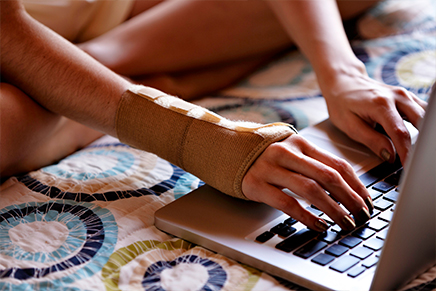
Treatment
In the event of a wrist injury, remember R.I.C.E. (Rest, Ice, Compress, Elevate), you can also take anti-inflammatory pain killers such as Advil, Aleve, or Motrin. If your pain starts to subside it’s best to start stretching and strengthening.
Our treatment programs are designed to avoid surgery and the use of narcotics. As long as you haven’t ruptured a tendon, we can help you recover quickly and fully by designing a treatment plan for your exact injury.
What to do if you Suffer a Winter Injury?
If you or a family member suffers a winter injury, it’s important to first assess the severity level. Sometimes muscle injuries can be treated with ibuprofen and by applying ice or a heating pad (whichever is more comfortable) or taking a warm bath. However, more severe injuries will need to be treated immediately by a professional. If you suspect broken or fractured bones or a head injury visit the emergency room. Otherwise, the talented doctors here at Michigan Sports & Spine will be happy to assist you with a proper diagnosis to your injury and the best course treatment plan to get you back into your winter wonder world!
ABOUT MICHIGAN SPORTS & SPINE CENTER:
We’re innovative leaders utilizing cutting-edge technologies such as musculoskeletal ultrasounds, PRP, stem cell treatment, and other innovative procedures. Michigan Sports & Spine Center is committed to resolving your pain, not simply masking it. We treat the whole body, not just the injury, and perform preventative treatment so your injury doesn’t come back. Our studies prove that Michigan Sports & Spine Center has patient success rates much higher than the national average. We treat everyone from high-profile athletes to your neighbor next door. Our primary focus is getting our patients back into the game of life!
Sources: WebMD, Everyday Health,
